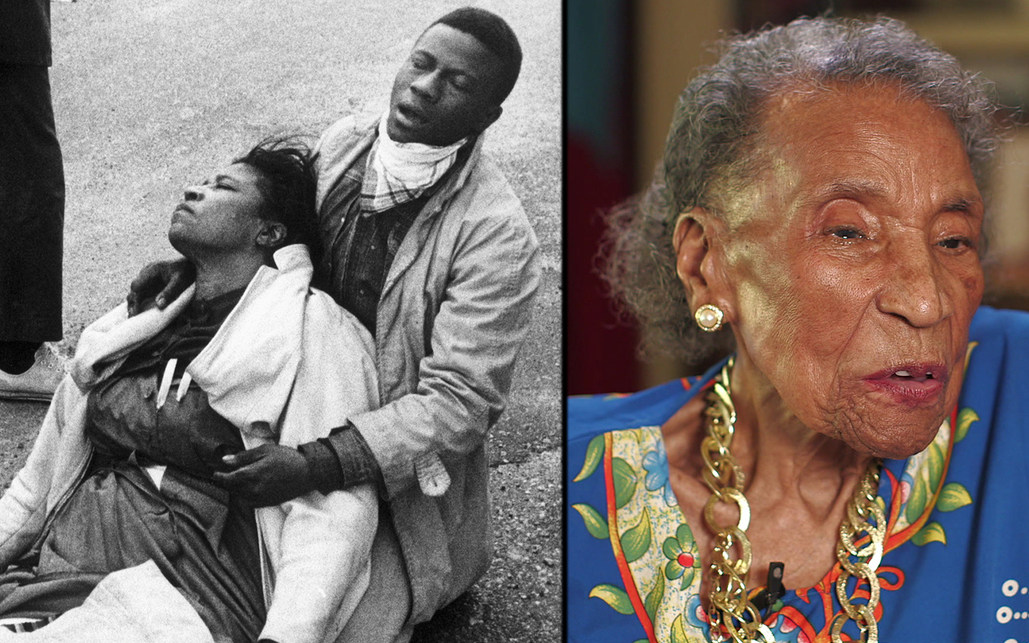Our celebration began with what is traditionally recognized as "
Black History Month". Our celebration continues with "
Women's History Month" . I will start the celebration with one of, if not my favorite, women in history, Kathryn Nelson. The strong bias is not simply because she was my mother but because she remains one of the most amazing women I have ever known. I have shared information about Mama before so I'll make this entry in the form of a timeline.

Kathryn Bryan was born in Detroit, Michigan in 1925.
Five years later her family moved to Memphis, Tennessee where she grew up.
.jpg)
Kathryn attended a private Elementary school in Memphis. The school was an experiment. The school's head mistress, had previously taught at a finishing school. Her goal was to determine if young Black children could be taught similar skills taught to white children. Because Kathryn could read upon starting school and was very bright, she skipped grades.
Kathryn went on to attend a public high school in Memphis. (I think it was Booker T. Washington)
She was a member of the marching band and played trombone. (I recall her saying she played very badly, but had fun playing) In one of her stories about high school she said a special visitor to their school was
W.C. Handy.
Kathryn graduated from high school and received a scholarship from the Delta Sigma Theta sorority and enrolled in LeMoyne-Owen College in Memphis. Kathryn was 17 years old.

Kathryn met Clyde Nelson and they dated until he joined the army to fight in World War II. He would return to LeMoyne after the war and complete his degree.
Kathryn obtained a degree in social science in 1946.
Kathryn left Memphis after graduation and simultaneously attended Columbia University Teachers College and Union Theological Seminary in New York. In 1948 she earned a joint degree, a Master's of Arts in religious education.
.jpg)
After graduate school Kathryn left the country for five years to become a missionary for the Episcopal church in
Haiti.
Kathryn returned to St. Louis to reunite with her college sweetheart and they were married September of 1952.
Kathryn held a variety of jobs and was once described as a "champion for persons of less chance." Jobs included working with children on the Navajo reservation at Fort Defiance, Arizona, social worker at Annie Malone Children's Home, director of the Junior Kindergarten at the Page Park YMCA, the Channel 9 series she created and hosted, "Growing Together", faculty member and administrator at St. Louis Community College at Forest Park, and program director at the Danforth foundation. She spent endless hours in meetings and sat on a variety of boards in the St. Louis community. She served on the board of directors of the St. Louis Public Library Board, was a trustee at Webster University, co-chair of the Forest Park Master Plan committee and was a board member of St. Louis 2004. (to name a very few)
Mama was a wise woman and very intelligent. She loved learning and was a voracious reader. She had a way of telling you what you needed to hear rather than what you wanted to hear. Mama was a great listener and had a gift of bringing people together. She was comfortable in her own skin and folks enjoyed being around her. In the book "Hitting Our Stride" by Joan Cohen, Karen Coburn and Joan Pearlman, Mama talks about aging, she was 54 at the time the book was written. She says, " I've come to see that for the really vital women, there's that zest for living; they can laugh and find joy and do what they want and make a contribution to the world." Mama had a zest for living until her last day and her contributions were many, she was truly an amazing woman. I miss her daily.



.jpg)
.jpg)

.jpg)
.jpg)

.jpg)

.jpg)
.jpg)
.jpg)
.jpg)

.jpg)
.jpg)
.jpg)

.jpg)










.jpg)
.jpg)

.jpg)
.jpg)
.jpg)
.jpg)

.jpg)
.jpg)

.jpg)
.jpg)








